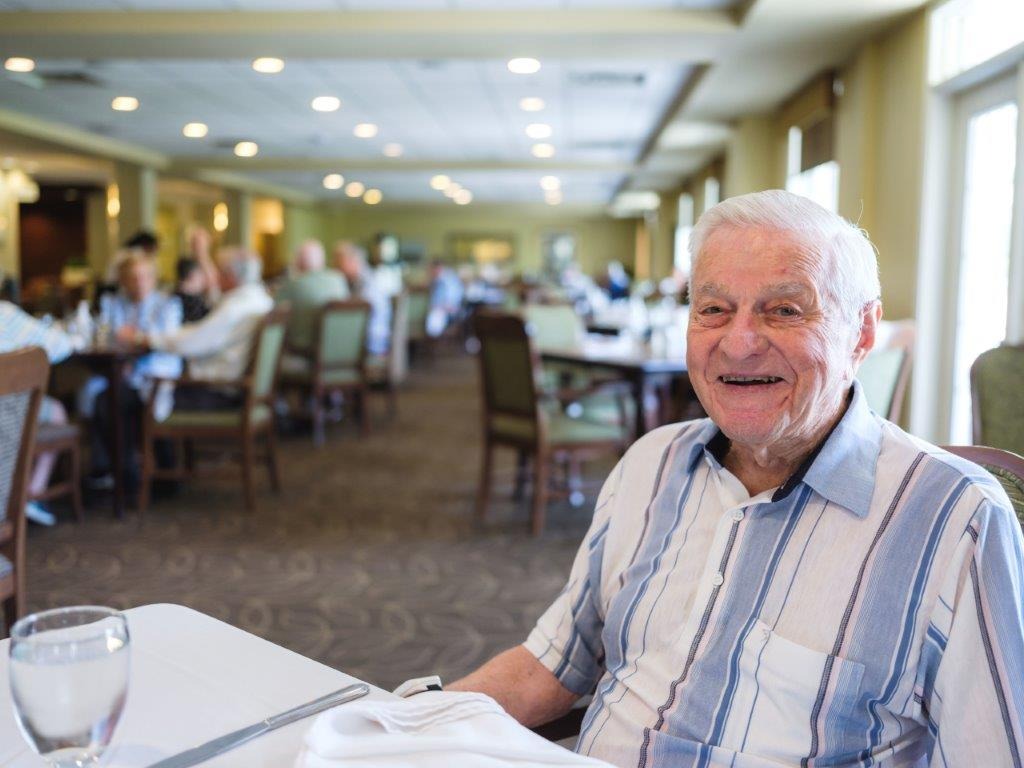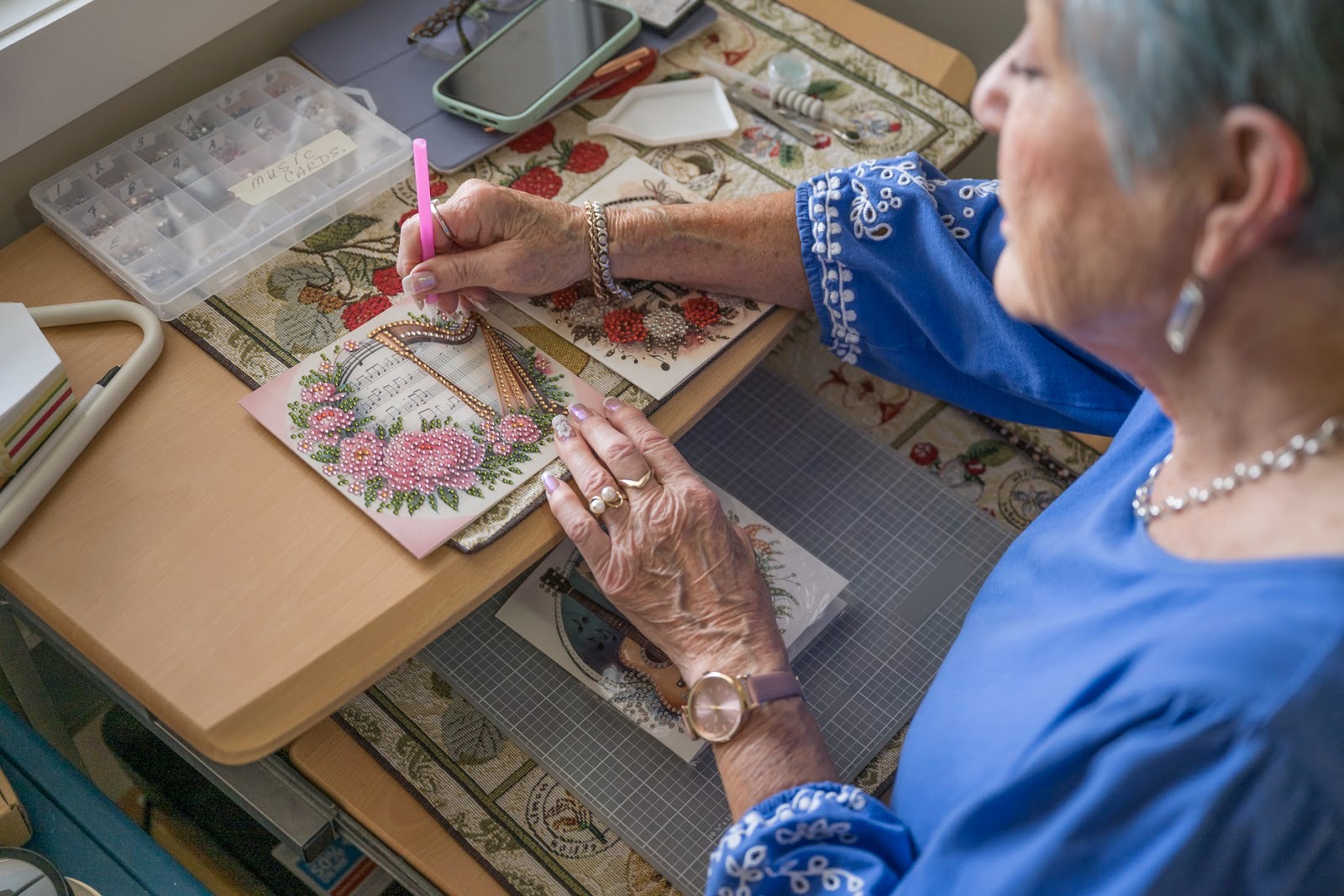Signs it's time for assisted living: A checklist for Calgary families
Your heart sinks as you notice your mom wearing the same outfit for the third day in a row. You find expired food in your dad's fridge again, and he brushes off your concern with a wave of his hand.
The home where you grew up, once filled with warmth and order, now feels different. Unsettling, even. These small moments accumulate quietly until one day they become impossible to ignore, and you're left with a question that weighs heavily on your heart: Is it time?
The realization that someone you love might need more care than you can provide at home brings a tangle of emotions.
Guilt. Worry. Uncertainty.
Perhaps even relief mixed with sadness.
Recognizing that a family member might benefit from assisted living is one of the most difficult acknowledgments a family can face.
This guide offers a practical checklist to help you identify the signs and make informed decisions about your loved one's care and safety, while honouring the deep love that makes this decision so hard.
Read more: Assisted living isn't what you think: Breaking the stereotypes in Calgary

Understanding the checklist for assisted living
Here's something important to remember: there is no single indication that necessitates an immediate change. You're not overreacting, but you're also not expected to make snap decisions based on one incident.
What to look for is changing patterns and incidents that emerge over weeks and months. Multiple indicators appearing together often paint a clearer picture that additional support would genuinely improve your loved one's quality of life and safety.
This checklist is designed to help you work through the fog of worry. It gives you a way to document what you're seeing, which makes those difficult conversations with healthcare providers and family members a little easier to manage. You're gathering information, not building a case. You're seeking clarity, not proof.
Daily living activities: Can they manage independently?
Personal care forms the foundation of independent living. Look for these changes:
Hygiene and grooming
- Poor hygiene despite previously maintaining high standards
- Wearing the same clothes multiple days in a row
- Changes in appearance that seem out of character
- Skipping showers or baths regularly
Nutrition and eating
- Noticeable weight loss over several months
- Poor eating habits or skipping meals
- Expired food in the refrigerator
- Difficulty preparing balanced meals
- Signs of dehydration
Home maintenance
- Neglected household maintenance, such as burned-out lightbulbs, garbage piling up, or broken fixtures
- Piles of unopened mail or unpaid bills
- Trouble maintaining the house to previous standards
- Unsafe living conditions are developing

Health and safety red flags
Physical changes often signal that someone needs more supervision and support:
Medical and mobility concerns
Falls and balance
- Frequent falls, even minor ones
- New bruises or injuries they can't explain
- Mobility issues, which are making it hard to navigate stairs or bathrooms
- Using furniture to steady themselves while walking
Medication management
- Difficulty managing medications independently
- Failing to take medication as prescribed
- Taking incorrect doses
- Confusion about medication schedules
Declining health
- Chronic conditions becoming harder to manage
- Medical needs requiring regular monitoring
- Multiple hospital visits or emergency room trips
- Healthcare providers expressing concern about safety at home
Cognitive and behavioural changes
These signs may appear gradually, making them easy to overlook at first:
Memory and thinking
- Memory loss affecting daily activities
- Cognitive impairment making decisions difficult
- Confusion about times, places, or familiar people
- Getting lost in previously familiar locations
Mood and behaviour
- Changes in behaviour, like increased anxiety or depression
- Erratic behaviour or uncharacteristic anger
- Becoming socially isolated from friends and activities
- Isolation from family members and the community
Caregiver burnout
Sometimes the clearest sign isn't about your loved one at all. It's about you.
Caregiver burnout indicators
- Feeling exhausted despite adequate rest
- Your own health suffering from caregiving demands
- Relationship strain within your family
- Unable to maintain your work or personal commitments
- Feeling resentful or guilty about caregiving responsibilities
Caregiver burnout is a legitimate concern. Recognizing your own limits protects both you and your loved one.
Creating your personal assessment
Use this table—or a version that works for you—to record observations over several weeks. Since we can't recall every incident or always know which ones to note at first, be sure to document specific events with their dates. This detailed record becomes a valuable resource during family conversations and medical appointments.

Having the conversation
Once you've identified undeniable signs that your parent needs additional care, approach the conversation with empathy:
- Choose the right moment. Don't rush into the discussion during stressful times or holidays.
- Focus on quality of life. Frame the conversation around how additional support could enhance their daily life, not what they're losing.
- Involve them in decisions. Respect their autonomy by including them in the research and decision-making process.
- Bring documentation. Share your observations factually, without judgment.
- Include healthcare providers. Their objective perspective can help validate concerns.
Read more: How retirement communities near you offer both familiarity and new opportunities
Next steps for Calgary families
If your checklist reveals multiple concerns, consider these actions:
- Schedule a comprehensive medical assessment
- Consult with your loved one's healthcare team
- Research assisted living options in Calgary
- Visit potential communities together if possible
- Discuss financial planning and resources
- Connect with other families who've made similar transitions
Finding the right support in Calgary
Deciding to explore assisted living in Calgary demonstrates your love and commitment to your family member's well-being. Assisted living care provides the right balance of independence and support, allowing seniors to maintain their independence while receiving help with daily activities.
The transition to assisted living doesn't mean giving up their freedom. It means accessing the right level of support at the right time. Many families find that their relationships with loved ones actually improve once the stress of caregiving is replaced with quality time together.
Trust your instincts. If you're noticing multiple signs from this checklist, it's worth exploring what additional support could look like. Your loved one's safety, health, and happiness matter, and so do yours.
We’re here to help. Please feel free to get in touch and ask the questions that you need to.
Assisted Living Checklist for Calgary Families

%201.svg)
%201.svg)
















